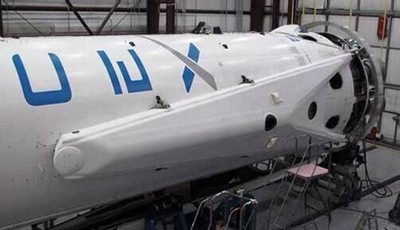Rocket reusability: a driver of economic growthby R.D. Boozer
|
| Just recovering only the first stage of a Falcon 9 for reuse on multiple flights would allow SpaceX to significantly lower the price of launches for satellites and crewed spacecraft. |
Why is this such a big deal? Until now, most of the enormous expense of spaceflight has stemmed from the fact that the rockets carrying payloads to orbit have been thrown away after every flight. Each of these discarded launch vehicles costs many tens of millions of dollars, or more, for just one flight. Imagine how expensive air travel would be if each Boeing or Airbus liner were used only for one flight and then sent to the junk heap. That absurd waste is the equivalent of what we have been doing in spaceflight since the 1950s.
Just recovering only the first stage of a Falcon 9 for reuse on multiple flights would allow SpaceX to significantly lower the price of launches for satellites and crewed spacecraft to a level far below what its competitors charge. However, SpaceX estimates that if they are able reach a point where the whole Falcon 9 rocket is recovered and repeatedly reused in such a manner, they may achieve launch costs for around one hundredth of what they currently are.
If they successfully meet this ultimate challenge, then we are on the verge of the first true Space Age, with all of the spaceflights that have occurred before amounting to an expensive, decades-long process of baby steps leading to this new capability. People who make the false claim that NASA’s now-defunct Space Shuttle proves reusability offers no economic advantage overlook three points: 1) the huge standing army of NASA and contractor personnel it took to prepare and launch the shuttle resulting in enormous manpower expenditures for that vehicle’s budget, 2) the shuttle was only partially reusable with the giant external propellant tank thrown away after each launch, and 3) the shuttle was never able to fly frequently enough to significantly lower per-flight costs and achieve a reasonable level of safety. A fully reusable Falcon 9 would not only have a smaller, more agile launch team, but a much faster turnaround between flights as well. A more practiced and seasoned flight and maintenance crew, brought about by the higher flight frequency, will also add an extra measure of efficiency and safety.
To those who would say the above comparison is not reasonable because of the Shuttle’s much greater payload capacity, it should be pointed out that eventual reusability is also anticipated for SpaceX’s huge new rocket, the Falcon Heavy or FH. The first non-reusable FH flight may occur as early as this year and will have been produced without any government financing of its development. This rocket will be the most powerful since the Saturn V sent astronauts to the Moon. Furthermore, it will have a greater cargo capacity than the Shuttle, much fewer required support personnel and the proposed reusable version is anticipated to have much more rapid turn-around time between flights.
| But as great as this accomplishment will be if it succeeds, it is not a good thing that SpaceX is the only major launch provider risking its own assets to aggressively pursue launch vehicle reusability. |
For years, commercial space station manufacturer Bigelow Aerospace has been waiting on the sidelines for economical trips to orbit to enable profitable use of its proposed stations. Industry and friendly governments would then be able to fly people and cargo to and from those stations with much smaller budgets than before. This new industry may supply a massive infusion of growth into the US economy in the coming decades. Driving this growth will be such developments as new medicines in bulk quantities from pharmaceutical companies and specialized manufacturing of novel materials, both of a type that are impossible to produce under Earth’s confining gravity or contaminating atmosphere. Other job-creating industries that we cannot even imagine would come into existence as well.
But as great as this accomplishment will be if it succeeds, it is not a good thing that SpaceX is the only major launch provider risking its own assets to aggressively pursue launch vehicle reusability. Such a situation is not healthy for the space launch market. Let’s hope that United Launch Alliance and Orbital Sciences Corporation (SpaceX’s major American competition) take up the reusability challenge before they face a situation where they literally cannot compete and their business dries up. Failing that, it may be that Blue Origin (coming from the other direction of perfecting reusable suborbital flight before moving on to orbital launch reusability) or some other relatively new upstart will be an ultimate beneficiary of inaction on the part of SpaceX’s traditional competitors.
Despite the peril of decreased competition for SpaceX, the payoff from reusability may go even further with America in for some exciting times ahead in the final frontier. SpaceX CEO Elon Musk recently stated that he is considering a near-term “swing around” flight of astronauts to the Moon followed by a possible landing shortly thereafter. This will be a mere prelude to the drama that SpaceX says will be its crowning accomplishment: making a second home for humanity on Mars.
The glories of the 20th century Apollo human lunar expeditions may pale in comparison to what will come to pass in the very near future. Reusability is the key to making all of these dreams a practical reality.
